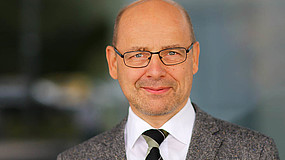
Part 1: Power electronics/drive technology
Total number of hours: 31 hours
8 lectures and 4.5 seminars
2 practical experiments of 3 hours each
Lecture and seminars in the winter semester
Final performance:
Winter semester
Pre-closers (VK150) with 1/3 of the scope on power electronics - electrical drive technology
Summer semester
Final oral examination with 1/5 of the scope of power electronics - electrical drive technology
Practical course:
Experiment 1: Characteristics of power electronic components
![]() (experiment instructions)
(experiment instructions)
![]() (experiment instructions
(experiment instructions
1 Introduction
1 Fundamentals of power electronics
1.1 Basic functions of power converters
1.2 Power semiconductors
1.2.1 Semiconductor diodes
1.2.2 Thyristors
1.2.3 IGBT transistors
2. half-wave rectifiers
2 Circuits of power converters
2.1 Half-wave rectifier (uncontrolled)
2.1.1 Current and voltage curves with capacitive load
2.1.2 Current and voltage curves with inductive load
3. half-wave rectifier
2.2 Multi-path rectifier (uncontrolled)
2.2.1 M2 midpoint circuit
2.2.2 B2 bridge circuit
2.2.3 B6 bridge circuit
4. controllable rectifiers
2.3 Controllable line-commutated rectifiers/inverters
2.3. 1 Two-pulse circuits
2.3.2 Three-pulse circuits
2.3.3 Problem of line commutation
5. power considerations
2.4 Power balance in converter circuits
2.4. 1 Control reactive power and distortion reactive power
2.4.2 Commutation reactive power
2.4.3 Measures to reduce control reactive power
6. direct current drive and line-commutated power converter
3. use of power electronic actuators in electrical drive technology
3.1 DC drives with line-commutated power converters
3.1.1 Basic circuits of line-commutated power converters
3.1.2 Problems of current leakage
3.1.3 Transmission behavior
7. pulse controllers
3.2 DC drives with transistor and thyristor pulse controllers
3.2.1 Operating characteristics and areas of application
3.2.2 Design and mode of operation of pulse controllers
3.2.3 Multi-quadrant drives
8. inverters
3.3 Power electronic actuators for three-phase drives 3.3.1 Overview of the actuators for three-phase drives, three-phase controllers, direct converters, intermediate circuit converters 3.3.2 Design and mode of operation of the pulsed intermediate circuit converter 3.3.3 Design and mode of operation of the pulsed intermediate circuit converter